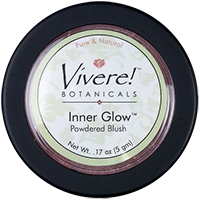
How to Read a Cosmetic Label
Any cosmetics sold in the United States are required by the Food and Drug Administration (FDA) to be labeled with its INCI names, however most consumers that buy cosmetics often forget to read the label and know little to nothing about the products they’re putting on their skin. “INCI” is an acronym that stands for International Nomenclature of Cosmetic Ingredients, a system of names for ingredients, botanicals and chemicals used for the manufacture of cosmetics and personal care products.
Learning how to read cosmetic labels, and understanding what they mean, is important because it’ll help you make a better informed decision whenever you’re purchasing personal care products.
Things to Remember When Reading a Cosmetics Label:
1. Look out for parentheses. Ingredient names can be pretty long and often go by a common name for easy reference. Common names of ingredients are listed in parenthesis next to its formal chemical name. You can also tell which ingredients have higher concentrations because ingredients are listed in order from greatest to least amount.
2. Alcohol-free: Is it really? When a personal care product has “alcohol-free” listed on its label, it might only be telling part of the truth. There are many different types of alcohol and when a cosmetics label says “alcohol-free” it most often refers to being ethyl alcohol free. Your product still may contain other types of alcohol, such as cetyl, stearyl, cetearyl or lanolin alcohol.
3. Too many ingredients can be bad. Cosmetics and personal care products with a long list of ingredients is something you should take note of because the more ingredients it has, the more likely it is that the product or its ingredients have been tested on animals. Organic cosmetics companies usually have a short ingredients list because their products are less processed and more holistic based.
4. How the product is tested. If a cosmetics label says its “cruelty-free” or “not tested on animals,” it means that the product, and not necessarily its ingredients, hasn’t been tested on animals. That’s where the difference lies because you might be buying a product that you think is cruelty-free yet the ingredients are animal tested.
5. Hypoallergenic – fact or marketing strategy? A product that is “hypoallergenic” is supposed to produce fewer allergic reactions than other products. The term hypoallergenic is very popular with cosmetics, especially when marketing products to sensitive skin consumers. Before you buy into the hype, you should know that there are currently no federal standards or definitions that regulate the use of the term or ensure that products labeled as hypoallergenic are less irritating.
Other things to consider with cosmetics labels:
What’s the shelf life of the product? Look for an open container symbol or expiration date which can tell you how long a product is considered good to use under normal conditions of storage and use. Storing cosmetics in warm humid environment can lead to earlier expiration.
Will it clog my pores or cause blemishes? If a cosmetic is labeled “noncomedogenic,” it means that the cosmetic product is not supposed to clog skin pores. Skin that can’t breathe under makeup can cause and irritate blemishes.
Who makes this product? “Manufactured” and “distributed” might seem like the same thing, but they’re not. Distributors of cosmetic products are not liable for product claims – the cosmetics manufacturer is the one responsible for accurate labeling and whether the product lives up to its claims.


